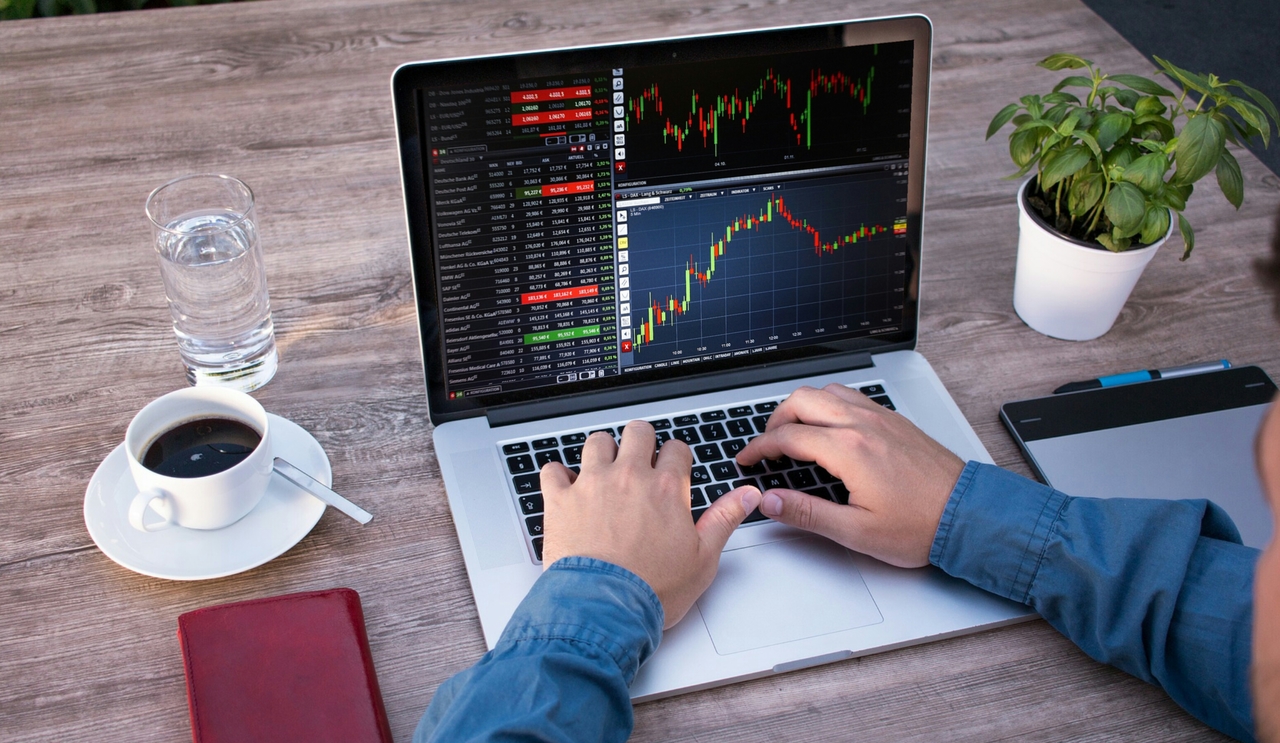Features to Look for in a Trading App
Trading apps have become essential tools for individuals seeking to engage in the financial markets. When selecting a trading app, it is crucial to consider the range of available assets for trading. A diverse selection of stocks, cryptocurrencies, forex pairs, commodities, and indices can provide investors with ample opportunities to diversify their portfolios and maximize potential returns. Look for a trading app that offers a wide variety of trading options to cater to your specific investment preferences.
In addition to asset diversity, another crucial feature to look for in a trading app is the availability of real-time market data and news updates. Timely access to accurate market information can help traders make informed decisions and stay ahead of market trends. A trading app that provides comprehensive market analysis, price alerts, and economic indicators can empower users to react swiftly to market developments and capitalize on profitable trading opportunities.
Security Measures in Trading Apps
When it comes to selecting a trading app, one of the crucial aspects to consider is the level of security it provides. Robust security measures are imperative to protect your personal information and financial assets from potential cyber threats. Look for trading apps that utilize encryption technology to safeguard your data and offer two-factor authentication for an added layer of security.
Furthermore, reputable trading apps often employ strict verification processes for account registration and transactions. This helps prevent unauthorized access and ensures that only verified users can engage in trading activities within the app. Additionally, some trading apps incorporate biometric authentication, such as fingerprint or face recognition, to enhance security and streamline the login process for users.
User-Friendly Interface of Trading Apps
When considering a trading app, one of the key aspects to take into account is its user-friendly interface. A well-designed interface can make the process of trading a simpler and more intuitive experience for users. Look for apps that offer easy navigation, clear layout of information, and customizable features to suit individual preferences. A user-friendly interface can enhance efficiency and ensure that users can easily access the tools and resources they need to make informed trading decisions.
Additionally, a user-friendly interface can contribute to a more pleasant overall trading experience. Apps that are visually appealing and offer a smooth user interaction can help reduce stress and frustration when managing investments. By prioritizing an app with a user-friendly interface, you can streamline your trading activities and focus on analyzing market trends and executing trades without being bogged down by complex or clunky software design.
Customer Support Options in Trading Apps
When choosing a trading app, it is essential to consider the available customer support options. Prompt and efficient customer support can make a significant difference in your trading experience. Look for trading apps that offer multiple channels of customer support, such as live chat, email, and phone support. Having access to various support options ensures that you can get help whenever you need it, regardless of the nature of your query or issue.
Another crucial aspect to consider is the responsiveness of the customer support team. Opt for trading apps that provide timely responses to customer inquiries. A quick resolution to any problems or concerns can prevent potential delays in your trading activities. Additionally, responsive customer support shows that the trading app prioritizes user satisfaction and is committed to offering reliable assistance when needed.
Trading Options Available in Trading Apps
When choosing a trading app, it’s crucial to consider the range of trading options it offers. Diverse trading options enable users to explore different investment opportunities and tailor their strategies based on their preferences and risk tolerance. Whether you’re interested in stocks, forex, cryptocurrencies, or commodities, a trading app with a wide selection of assets ensures that you have the flexibility to diversify your portfolio and stay informed about various market trends.
Moreover, the availability of advanced trading options such as derivatives, options, and futures can enhance your trading experience and provide opportunities for more sophisticated investment strategies. These tools enable users to leverage their positions, hedge against market risks, and capitalize on price movements in both bullish and bearish market conditions. By evaluating the trading options offered by different apps, you can select a platform that aligns with your financial goals and trading style.
Fees and Charges Associated with Trading Apps
When considering a trading app, it is essential to carefully examine the fees and charges associated with using the platform. These costs vary among different apps and can have a significant impact on your overall investment returns. Typical charges may include commission fees for buying and selling securities, account maintenance fees, inactivity fees, and any additional charges for specific features or services. Understanding these fees upfront can help you make informed decisions and avoid any surprises once you start trading.
In addition to the standard fees, some trading apps may also have hidden costs that are not immediately apparent. It is crucial to read the fine print and thoroughly review the fee schedule provided by the platform. Some apps may charge extra for market data subscriptions, advanced trading tools, or access to certain financial markets. Being aware of all potential charges is crucial for accurately evaluating the overall cost of using a trading app and ensuring it aligns with your investment goals and trading strategy.
Educational Resources Offered by Trading Apps
When selecting a trading app, one essential aspect to consider is the range of educational resources it offers. These resources can vary from informative articles and tutorials to webinars and demo accounts. A comprehensive selection of educational materials can greatly benefit both beginner traders looking to learn the basics and experienced investors seeking to expand their knowledge and skills in the market.
Moreover, interactive tools such as trading simulators and educational quizzes can make the learning process engaging and practical. The availability of these resources within a trading app can enhance the user’s understanding of trading concepts and strategies, enabling them to make more informed decisions when navigating the financial markets. Investors should prioritize trading apps that provide a well-rounded educational experience to support their trading journey effectively.
Compatibility of Trading Apps with Different Devices
As technology continues to rapidly evolve, the compatibility of trading apps with various devices has become a crucial factor for traders. Whether you are using a desktop computer, laptop, tablet, or smartphone, it is important to ensure that the trading app you choose functions seamlessly across all your devices. Compatibility issues can hinder your trading experience and potentially lead to missed opportunities in the market. Therefore, selecting a trading app that is optimized for different devices is essential for smooth and efficient trading.
A user-friendly interface that is consistent across all devices is key to ensuring a seamless trading experience. Traders should look for trading apps that offer a responsive design and intuitive navigation on both mobile and desktop platforms. The ability to access your trading account, place orders, and monitor market movements effortlessly on any device can greatly enhance your overall trading experience. By choosing a trading app that is compatible with different devices, traders can stay connected to the markets and make informed trading decisions anytime, anywhere.
Account Types Offered by Trading Apps
When choosing a trading app, it is essential to consider the various account types that are offered to users. Different trading apps may provide options such as individual accounts, joint accounts, retirement accounts, or specialty accounts tailored for specific trading needs. Understanding the account types available can help users select the one that aligns best with their trading objectives and preferences.
Individual accounts are the most common type offered by trading apps, allowing one person to own and manage the account. Joint accounts, on the other hand, can be useful for multiple individuals looking to invest or trade together. Retirement accounts provide tax advantages for long-term savings, while specialty accounts may cater to advanced traders or those with specific investment goals. Be sure to explore the account types provided by different trading apps to find the most suitable option for your financial needs.
Reviews and Ratings of Trading Apps
When deciding on a trading app to use, it can be helpful to consider the reviews and ratings provided by other users. Reviews offer firsthand insights into the experiences of individuals who have used the app, shedding light on its performance, features, and overall user satisfaction. By taking the time to read through reviews, you can gain valuable information that may influence your decision on whether to use a particular trading app.
Ratings provide a quick snapshot of how users perceive the app, usually on a scale of one to five stars. While a high rating may indicate a well-liked app, it’s essential to read reviews as well to understand the reasons behind the rating. Some users may give a low rating based on personal preferences or technical issues that may not be relevant to your trading needs. By considering both the ratings and reviews together, you can form a more accurate picture of the trading app’s strengths and weaknesses.

